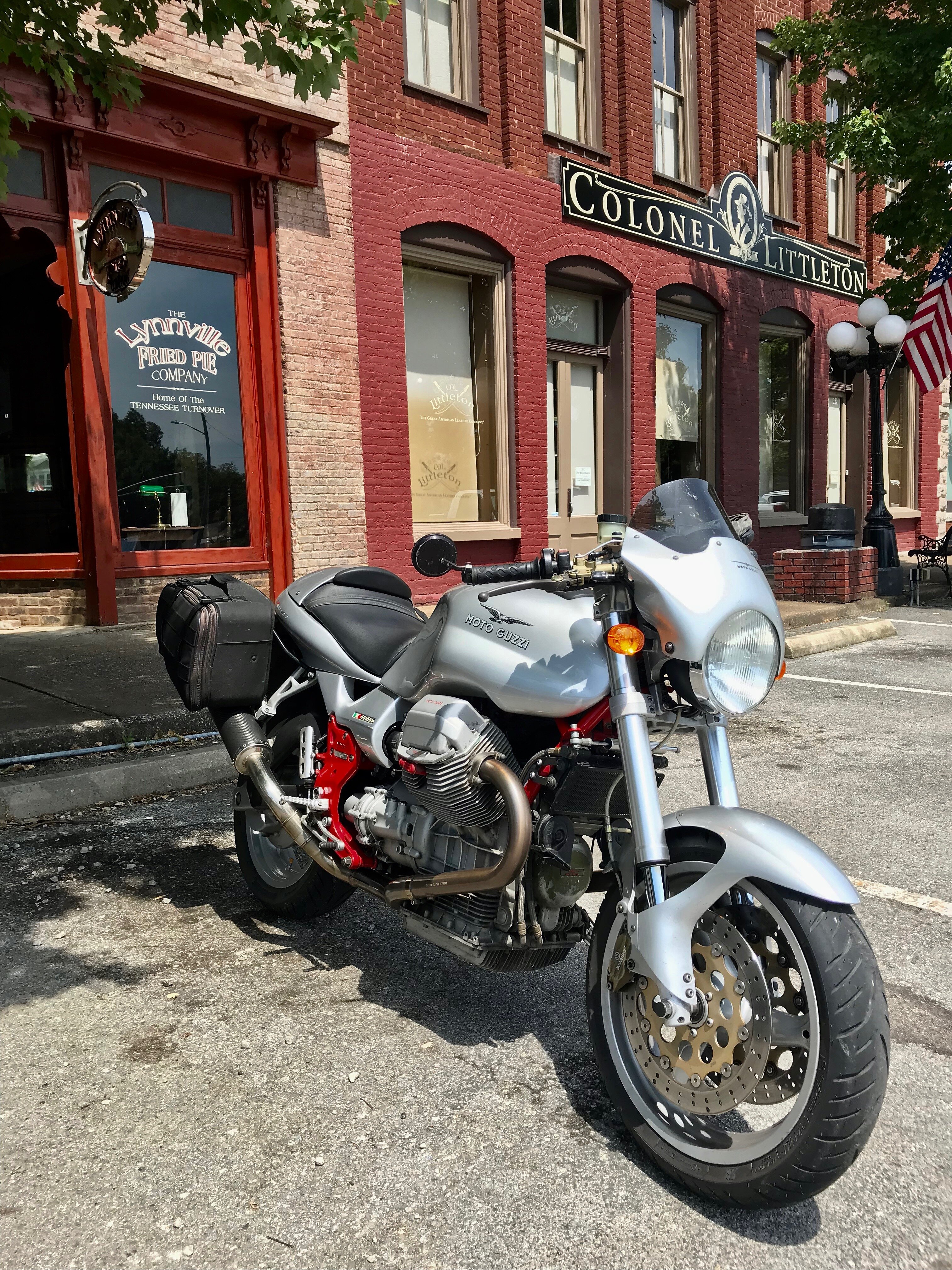-
Posts
20,500 -
Joined
-
Last visited
-
Days Won
1,189
Content Type
Profiles
Forums
Events
Gallery
Community Map
Everything posted by docc
-
I've owned two BMW. "Be My Woman " and "Bring More Wallet " . . . No surprise which one I still have . . .
-
When you come back to guzzidiag, instead of clicking on "Changelog", select the program for your computer operating system (Windows, Linux, or MacOS) and download the file. [edit: I am running GuzziDiag V0.47, but cannot get the current V0.60 to open on my Mac.]
-
Still trying to run "reader?" Study the basic tutorial I linked. Maybe it will get you back on track . . .
-
You don't often find "reliable", "daily driver" and "Moto Guzzi" in the same post . . .
-
A 510hp wagon?!? Sign me up!
-
-
You absolutely do not need to download your map to run guzzidiag and see your CO Fuel Trim and other parameters.
-
Pretty sure you don't need "Read" or "Write." Take a look at the basics:
-
Were you able to confirm that all of the critical sensors got plugged back in after the filter/exhaust changes?
-
While the vast majority of CO Fuel Trim readings have been reported in the negative (lean) double digits, I have seen this set heavily into the positive (rich) range. It will be interesting to hear what you find, @arveno . . . A couple thoughts linger: > It may be telling how the bike runs and feels and impresses after the complete Decent Tune-up. Skipping steps does not a Decent Tune-up make. > I recall Dr. John quoted as saying (and I paraphrase), "We cooled the valves in the race bikes with fuel, but that is not acceptable in the production street bikes." My take on this has been that is okay for our air-cooled donk to be a bit rich, but lean could lead to heat in the wrong places. Of course, "Just Right" is ideal. Ask Goldilocks . . .
-
That's a good observation, @red lion . . . While the potential adverse effects of connecting the vacuum ports (as a way of eliminating the dubious Fuel Vapor Recovery System) are like minimal, I felt more confident eliminating that cross over that serves no purpose beyond convenience of blocking the taps. After a couple failures using rubber caps that dry out, crack, or loosen over time, I chose silicone caps that are impressively tight and secure. https://www.amazon.com/gp/product/B083FB139Z/ref=ppx_yo_dt_b_search_asin_title?ie=UTF8&th=1
-
Haha, well those "pondering" images are screen shots from said "Blue Brothers" movie. Seen, pondering rather deeply, at 0:15-0:18 in "The Final Demise of the Bluesmobile" . . .
-
Thanks, @Speedfrog! I removed the link I posted. I see they have superseded the secondary cable with an adapter for cables to different devices. I have long wanted a dedicated "Tablet" or iPad to run guzzidiag when I am away from my home computer. Looks like this cabling is the way to go. I will replace the link in the Diagnostic Cables topic in "How to . . ."
-
http://www.casperselectronics.com/cart/index.php?route=product/product&product_id=853&search=109172
-
Just enough. It's tight and fussy. Helps to have the bike on a lift with the throttle bodies at "working height." Warming the rubber and using a rubber lubricant like that P-80 is really helpful.
-
Lonelec in the UK had proven very reliable for the two diagnostic cables.
-
The mounting ears of the "black head" are slotted such that the TPS rotates relative to the fully closed (as @gstallons emphasized) throttle plate. Pay special attention, in Step#2, to remove all of the aspects that can hold the throttle plate open even the slightest. In fact, pressing the throttle plate tightly closed while setting the TPS, or "Zip-tying" it as @Lucky Phil has suggested, is absolutely worthwhile. Only loosen the two fasteners enough to tap one of the mounting ears with something like the butt of a small screwdriver handle. Watch how much the reading changes with these tiny taps. Tighten first one, then the other fastener while watching how much the reading changes. Keeping the fasteners as snug as possible helps minimize the tightening change, yet expect 0.030 volts or so. Always tighten the fasteners in the same order and amount and the reading change becomes very consistent. At this point, use the "tap" method to compensate for the "tightening change" and, as @Speedfrog said, "rinse and repeat until it's locked in."
-
Thanks to @PJPR01 for asking. This image has been added to the "Decent Tune-up", Step#2, to help identify the two fasteners that secure, and adjust, the TPS:
-
Oh, no, the TPS adjustment sucks much more than a simple screw. There must be nine steps to get it right. But worth it. See Step#2 of the Decent Tune-up for insights. (FWIW, the TPS is Step#2, not the "Final Step." I should add an image of the TPS fasteners (thanks for asking) . . . [edit:done]
-
Those are good questions. Sounds like you feel your V11 is still running rich even after removing the TrickeryBox? What makes you think this is the case? The TPS does not lean, richen, or benefit from "playing with it." (I tried that in the early days before the fine folks here patiently helped me understand what the TPS actually does.) Have you performed the entire "Decent Tune-up" to establish a baseline?
-
True, that explains what LuckyPhil has suggested.
-
As much as I have ridden my ShortFrame 25º 2000 Sport, I really haven't ridden many other SpineFrames. By comparison, I recall riding a friend's 26º '97 1100 Sport-i. I thought it felt a lot like my 1975 GoldWing. A totally reliable track without any hint of "quickness" or surprise. Expect effort to turn-in. During the brief time that Nashville had a Moto Guzzi dealer, there was a "Demo Ride" event. [early-mid 2000s] I rode a LongFrame Café Sport (Öhlins plus handlebars, not like my "clip-ons"). It felt so predictable and forgiving. I remember thinking, "They have tamed the SpineFrame." My *impression* from those brief riding experiences is that the later generation LongFrame V11 (especially the handlebar versions) strike a balance between the mid-nineties SpineFrames and the more demanding V11 ShortFrame/RedFrame. The comparison really impressed me that there were "people" at Moto Guzzi that continued to work relentlessly to make the Moto Guzzi experience better for the user (us) . . .
-
Removing and replacing the complete throttle body assembly on a SpineFrame Guzzi is an "event." Replacing the rubber boots? Not so much. Fussy? Yes. Instead of taking the airbox out (!), release the clamps of the rearward rubber intakes from the back of the throttle bodies and push those rubber tubes out of the way into the airbox. Yes, the actual intake rubbers are tight fitting, very short, and stiff. Warm your new ones with a heat gun. Nothing extreme, just pliable. I like Shin-Estu grease, but the best temporary (evaporates away) rubber assembly lube I have found it this P-80 Emulsion from "ipcol":
-
The "lens" that provides the color and icon above the bulb(s) is easy to access as those three hex fasteners on the mounting bezel between the instruments. The incandescent bulbs, themselves, can be extracted from their socket with a suitable gripping tool ("hemostat") without having to access and remove the sockets. These little incandescent bulbs will zinc plate the inside of the glass globe over time and get dark. They will brighten with fresh replacements even if the bulb is not blown out. Others will have to answer the LED replacement questions.







